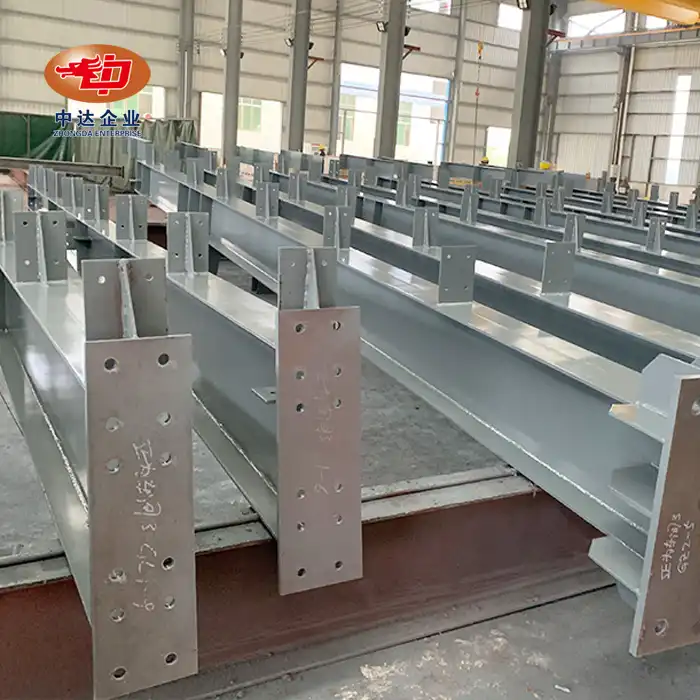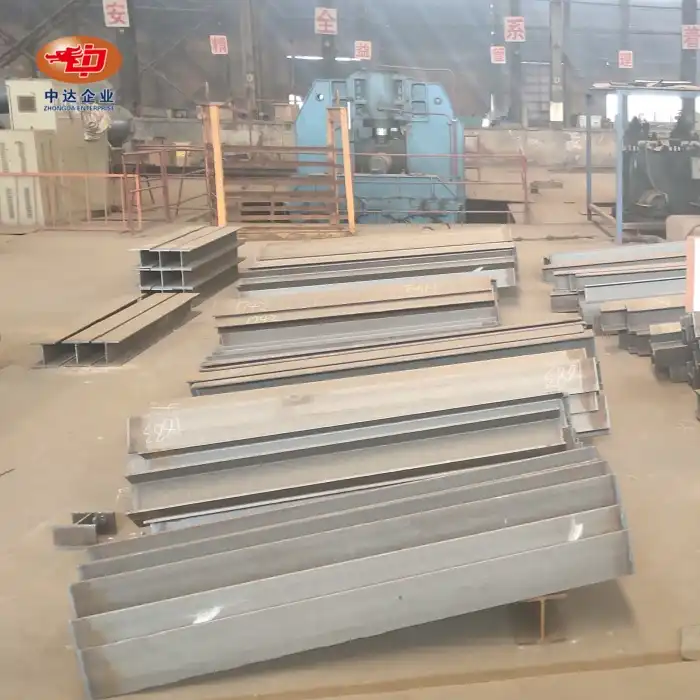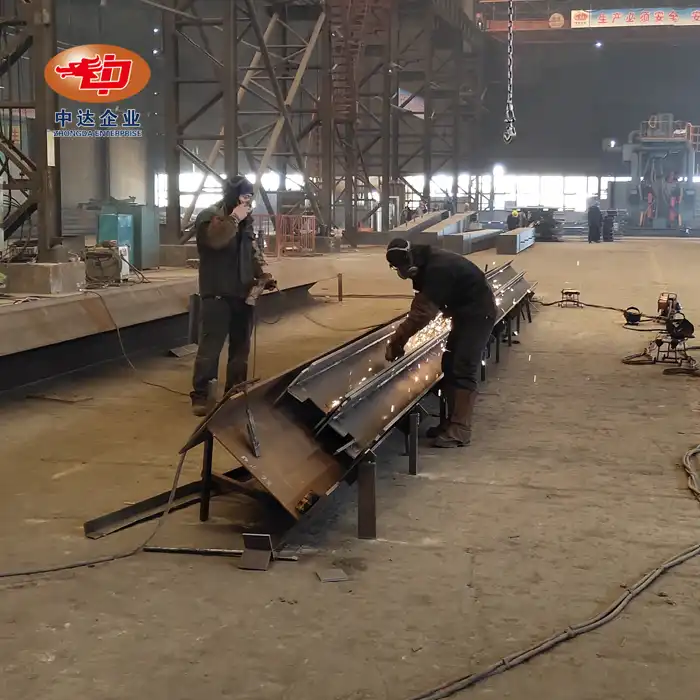Cantilever Method: Balancing Act of Precision
Symmetrical Cantilever Construction
The symmetrical cantilever method is a marvel of engineering ingenuity. This technique involves building the bridge deck outward from the main towers in a balanced manner. As each segment is added, temporary stay cables are installed to maintain equilibrium. Our Q420qE steel, known for its exceptional yield strength, plays a crucial role here. Its high strength-to-weight ratio allows for longer cantilever sections, reducing the number of temporary supports needed and accelerating construction timelines.
Asymmetrical Cantilever Erection
For steel cable-stayed bridges with unequal span lengths, the asymmetrical cantilever method comes into play. This approach requires meticulous planning and precise load calculations. Our advanced BIM-based digital design system enables us to visualize and optimize the erection process, ensuring that each stage of construction maintains perfect balance. The use of our OVM250 type anchorages in the stay cable system provides the necessary strength to support the asymmetrical loads during erection.
Cantilever Carriage System
Implementing a cantilever carriage system elevates efficiency to new heights. This self-advancing formwork moves along the bridge deck, supporting the construction of each new segment. Our expertise in heavy bridges allows us to design and fabricate custom carriage systems that seamlessly integrate with the unique requirements of each project. The result? A streamlined erection process that significantly reduces construction time without compromising on quality.

Segmental Construction: Precision in Pieces
Precast Segment Technology
Segmental construction revolutionizes bridge erection by breaking the deck into manageable, precast pieces. Our state-of-the-art facility, boasting a 60,000-ton annual production capacity, is perfectly equipped to manufacture these precise segments. Each piece is crafted with our Q420qE steel, ensuring uniformity and structural integrity. The use of precast segments not only accelerates on-site assembly but also minimizes environmental impact at the construction site.
Match-Cast Method
The match-cast method takes segmental construction to the next level. Each segment is cast against its adjacent piece, ensuring a perfect fit when assembled on-site. This technique requires extreme precision, which is where our 3D coordinate detection system comes into play. With a total station accuracy of 0.5″, we guarantee that each segment aligns flawlessly, creating a seamless structure that performs as a monolithic unit.
Epoxy Jointing Technique
To ensure the longevity of steel cable-stayed bridges, we employ advanced epoxy jointing techniques. Our specially formulated epoxy not only bonds the segments but also provides an additional layer of waterproofing. Combined with our innovative corrosion protection system – featuring a PE outer sheath and graphene inner coating – this jointing method contributes to the bridge's impressive 53-year UV resistance, setting new standards for durability in harsh environments.
Full Span Launching: Engineering on a Grand Scale
Incremental Launching Method
For bridges spanning vast distances, the incremental launching method proves invaluable. This technique involves constructing the bridge deck behind the abutment and gradually pushing it forward. Our expertise in heavy-duty steel handling, supported by our 50T crane capacity, enables us to maneuver massive sections with precision. The use of our Q420qE steel, with plate thicknesses ranging from 60-120mm, provides the necessary strength to withstand the stresses of launching while minimizing overall weight.

Floating Crane Assembly
In scenarios where water bodies present challenges, floating crane assembly offers a solution. This method involves using large floating cranes to lift and place pre-assembled steel cable-stayed bridge sections. Our experience in complex infrastructure projects, combined with our ability to fabricate large steel components, makes us ideally suited for this demanding technique. The vertical accuracy of our cable towers, maintained within a 1/4000 error tolerance, ensures perfect alignment even in challenging maritime conditions.
Strand Jack Technology
Strand jack technology represents the pinnacle of precision lifting. This system uses high-strength steel cables and hydraulic jacks to lift and position massive bridge sections. Our expertise in stay cable systems, particularly our use of Φ7mm galvanized steel wire compliant with EN 10138 standards, translates seamlessly to strand jack operations. This method allows for the erection of entire spans in a single lift, dramatically reducing construction time and minimizing disruption to surrounding areas.
Conclusion
The erection of steel cable-stayed bridges represents a fusion of engineering prowess and innovative construction techniques. At Shenyang Zhongda Steel Structure Engineering Co., Ltd., we've honed these methods to perfection, leveraging our advanced manufacturing capabilities and deep industry expertise. From the precision of cantilever construction to the efficiency of segmental erection and the grandeur of full span launching, each technique showcases our commitment to excellence. As we continue to push the boundaries of what's possible in bridge construction, our focus remains on delivering structures that are not just functional, but truly extraordinary.
Contact Us
Ready to elevate your next bridge project? Choose Zhongda Steel for unparalleled expertise in Q420qE steel cable-stayed bridges. Our innovative solutions, backed by rigorous quality control and a track record of success, ensure your project stands the test of time. Contact us today at Ava@zd-steels.com to discuss how we can bring your vision to life with engineering excellence and global impact.














